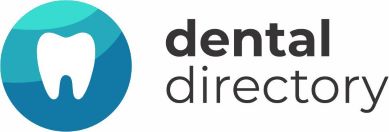5 reasons why doctors picked the 3Shape X1 above anything else
06/08/2020
by Dental Axess

5 reasons why doctors picked the 3Shape X1 above anything else
3Shape has asked their beta testers (two of them are Dental Axess customers) what they think is most important to be aware of when considering a CBCT solution. This is what they said after using the brand new X1 for a few months.
Deciding how to invest your practice’s precious financial resources is no easy task. If you’re looking into purchasing a CBCT solution sometime soon, you’ve probably already started comparing different options and brands, both on the nonfinancial as well as on financial implications. But how do you really know if the investment will be beneficial to you – financially or otherwise? 3Shape has asked beta testers to help you reflect on some of the concerns they had before starting to work with X1.
“Patients don’t come and get a CBCT scan for fun. I want to answer their specific questions while offering a comfortable experience.”
Torsten Seidenstricker, Director of Adent Cliniques Dentaires SA, Aubonne Switzerland
“I want to easily see if the patient is in the right position”
Nancy Lunghi, Dentist and Holder of the Dental Office STUDIO LUNGHI, Tessin Switzerland
“Image quality should be of the highest level”
Wouter Reybrouck, Dentist and owner of the dentalclinic Liedent, Brussels Belgium
1. Will the image quality of the 3Shape X1 be high enough?
“Our primary concern before starting to use this new CBCT system was whether the image quality would indeed be good, and whether motion compensation would really work. We can now say that image quality is indeed from the highest level and the motion compensation really works well: we had no single image that was disturbed by motion of the patient.”
Wouter Reybrouck
“With X1 you can choose the image quality (low dose, normal, high, ultra high), and therefore also the radiation, depending on the case. You can for example choose a low dose quality image for an extended control image or an ultra high quality for a high precision little area, for endodontic treatment, for example.”
Nancy Lunghi
2. How much time does it take to get used to a new system?
“The X1 is quite simple to use. The image software guides you step by step through image acquisition. With the head tracker you can asily see if the patient is in the right position.”
Nancy Lunghi
“You don’t have to be a computer specialist to operate the X1. The interface is very handy, intuitive and straight forward.”
Wouter Reybrouck
3. How does it integrate with the other systems in my practice?
“The scanner lets me communicate my results seamlessly – not only with other 3Shape solutions, but also with second party software for implant planning, for example.“
Torsten Seidenstricker
“I work with 3Shape TRIOS scanners, so I can easily program guided implantation with the integrated Implant Studio software. But even if you don’t use 3Shape products, the images are easy to ex- or import and I can use other programs or just send the data to my technician.“
Nancy Lunghi
4. Will it contribute to a good atmosphere in my practice?
“For me, patient experience is key. Users don’t get a CBCT scan for fun, but because a specific question needs to be answered. I want to be able to do this as comfortable and fast as possible. The X1 stylish design really adds to a pleasant experience.“
Torsten Seidenstricker
“X1 presents a simple and modern design that can be integrated in every dental office.“
Nancy Lunghi
5. How does this investment benefit the patient?
“When bringing a new product to the market, asking the right questions on behalf of your end users is key. This is my reason for choosing X1. It takes the perspective of the patient and the dentist. Less radiation, while you can freely and intuitively choose the field of view. No lying down or anxiety-inducing fixation of the patient needed – just a camera that tracks the head while standing.“
Torsten Seidenstricker
Contact
Unit 3.5, 56 Delhi Road, North Ryde NSW, 2113, Australia
